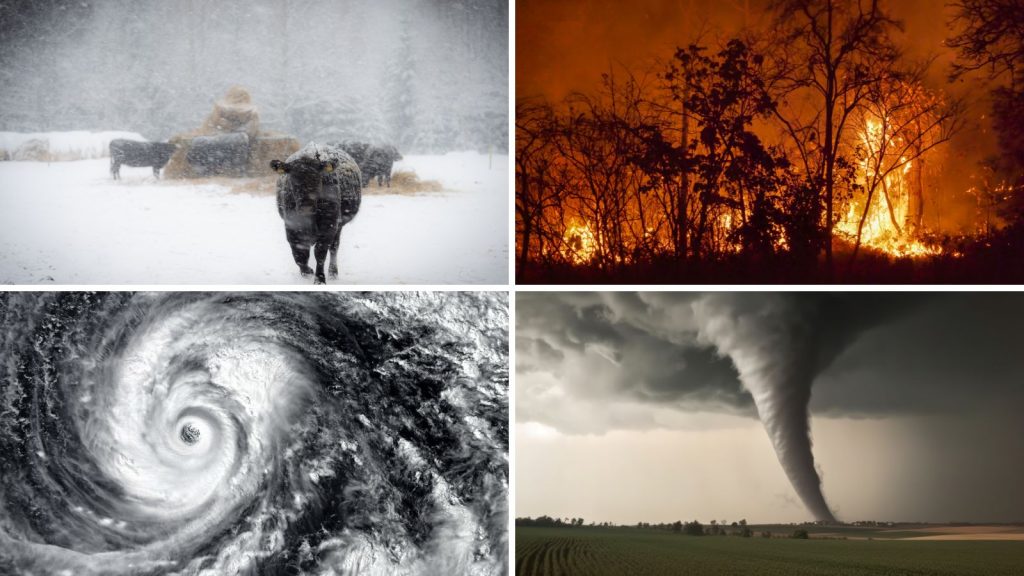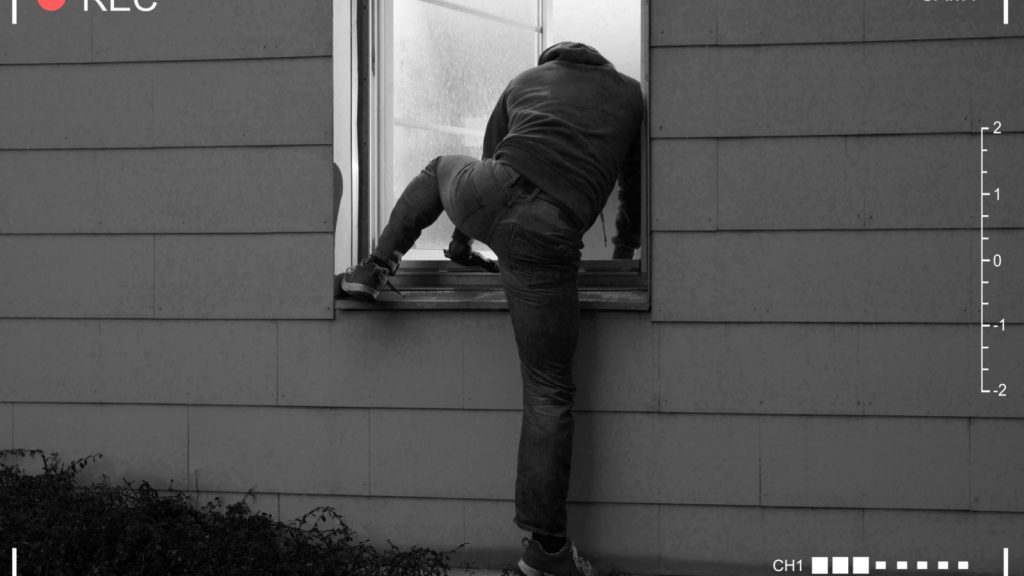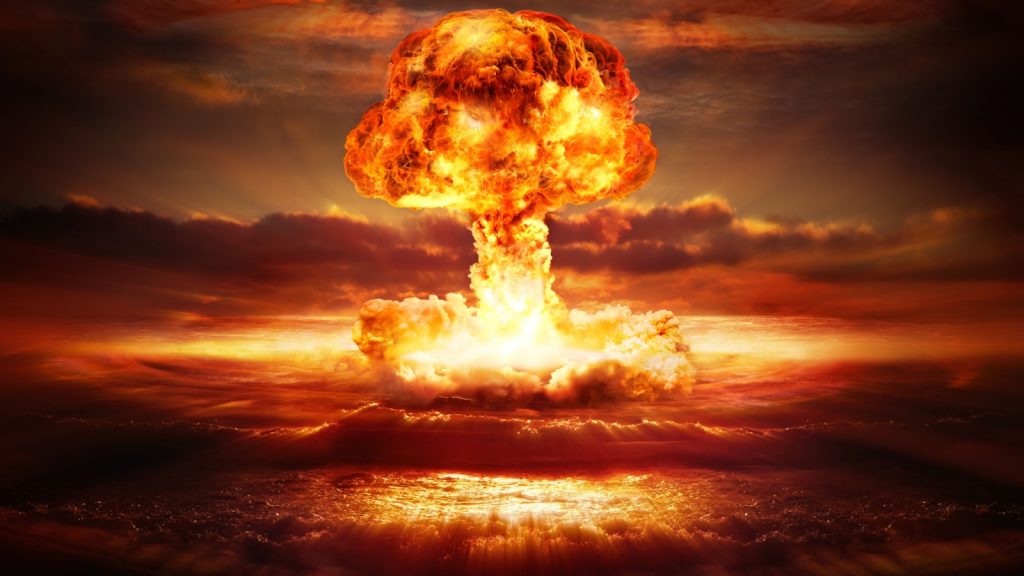The United States experiences a high volume of natural disasters each year, ranging from storms and floods to wildfires and earthquakes. In recent years, the number of major disasters has been rising – for example, 2023 saw 28 separate billion-dollar weather disasters (a new record). However, not all hazards are equally likely everywhere. Some disasters (like floods) occur nationwide and very frequently, while others (like hurricanes) are region-specific.
This article breaks down the most common natural disasters in the U.S., how often they happen and where, and which emergencies you should prioritize preparing for based on frequency and risk. We’ll focus on key threats including floods, hurricanes, tornadoes, wildfires, earthquakes, winter storms, droughts, and extreme heat, using recent U.S.-specific data.
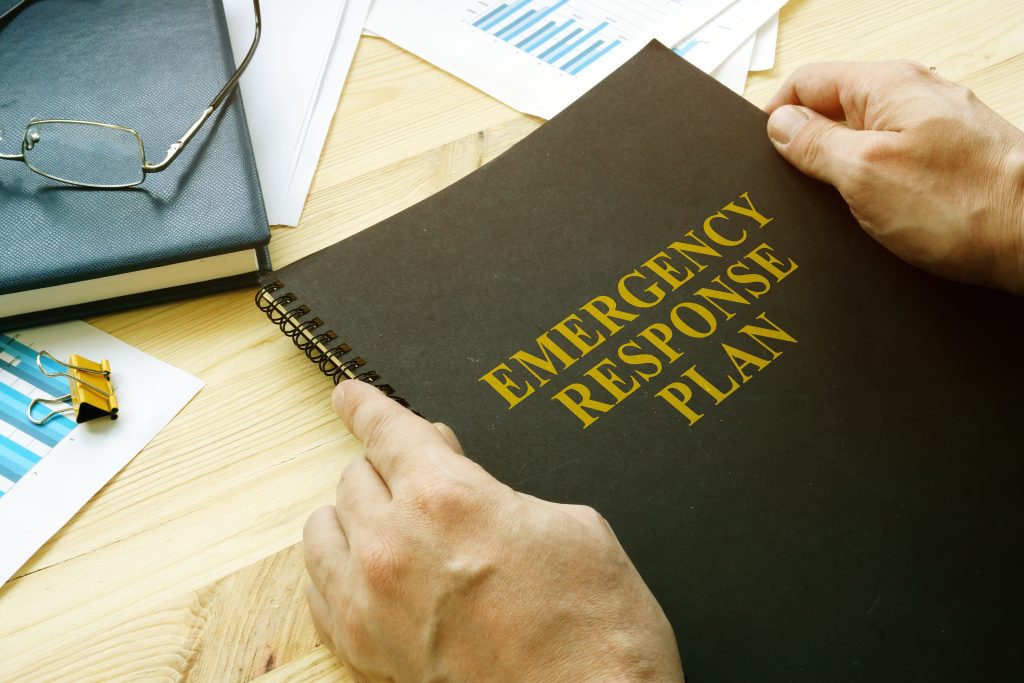
Floods: The Most Common U.S. Disaster
Flooding is the most common and widespread natural disaster in the United States. In fact, about 90% of all U.S. natural disasters involve flooding. Floods can be caused by heavy rains, tropical storms, overflowing rivers, melting snow, or dam failures. FEMA estimates that at least 10% of the nation’s land area – home to roughly 13 million Americans – is at risk of flooding. Every state in the country experiences floods. Between 1996 and 2019, 99% of U.S. counties were hit by at least one flooding event.
Regional Flood Patterns
Coastal states along the Gulf of Mexico (like Florida, Louisiana, and Texas) get some of the worst floods (often from hurricanes), but inland areas are vulnerable too. Floods also carry a huge financial and human cost. They are not only frequent but one of the costliest hazards, causing billions in damage to homes, roads, and infrastructure.
Flood frequency is increasing in many areas as weather patterns change. Nationwide, the impact of flooding has grown – the National Flood Insurance Program (NFIP) now handles about 71,000 flood insurance claims in an average year (2010–2019), almost double the annual claims compared to the 1980s. Climate change is contributing to heavier downpours and more extreme rainfall events, which leads to more flash flooding.
Given how common floods are, flood preparedness should be a top priority for almost everyone. Even if you don’t live next to a river or coast, remember that “where it rains, it can flood.” This means you should know your local flood risk, avoid building in floodplains if possible, consider flood insurance, and be ready to protect your home (for example, by elevating valuable items or using sandbags) during heavy storms.
Hurricanes: Coastal Storms with High Impact
Hurricanes (tropical cyclones) are massive storm systems characterized by powerful winds, heavy rain, and storm surge flooding. In the U.S., hurricanes primarily threaten coastal regions along the Atlantic Ocean and Gulf of Mexico. On average, about one hurricane makes landfall in the U.S. each year, but some years see several hurricanes hitting back-to-back. The official Atlantic hurricane season runs from June 1 to November 30 each year.
Hurricane-Prone Regions
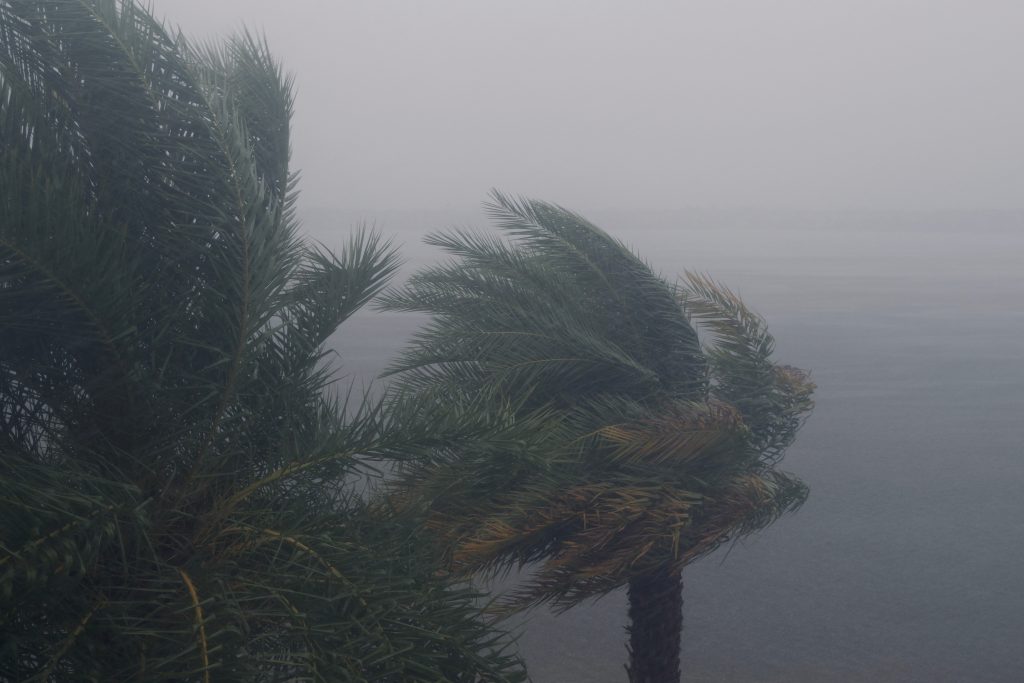
States like Florida, Texas, Louisiana, North Carolina, and others along the Gulf/Atlantic coasts are most at risk of hurricane strikes. For example, Florida has been struck by more hurricanes than any other state in the past century. By contrast, the U.S. West Coast has virtually no hurricanes (the Pacific Ocean’s storms usually weaken before reaching California, though Hawaii and U.S. island territories do face tropical storms).
Hurricane Impact and Trends
Although hurricanes are less frequent than floods or thunderstorms, they rank among the most destructive disasters. Tropical cyclones cause more damage in the U.S. than any other disaster type, accounting for about $1.5 trillion in total losses since 1980. They also have caused the highest number of disaster-related deaths (over 7,000 deaths from 1980–2024, largely due to storms like Katrina in 2005).
Hurricanes often bring intense winds (over 100 mph), storm surges that inundate coastal areas, and flooding rains that can extend far inland. For instance, Hurricane Harvey (2017) dumped record-breaking rainfall over Texas, causing catastrophic floods hundreds of miles from the coast.
Climate patterns are influencing hurricane activity. Warmer ocean temperatures and higher sea levels are expected to make hurricanes stronger and wetter on average. Scientific models predict future hurricanes will produce more intense rainfall and higher coastal flooding (from storm surges on top of sea level rise). We have already seen an uptick in major hurricanes (Category 3 or higher) in recent decades.
Whether you live in a hurricane zone or are traveling to one, it’s crucial to prepare: know your evacuation routes, have supplies to ride out at least 3 days without power, and secure your home (boarding up windows, trimming trees, etc.) before a storm hits.
Tornadoes: Twisters in the Heartland
Tornadoes are fast-spinning columns of wind that extend from thunderstorms to the ground. They can happen in many parts of the U.S., but are most famously associated with the central states. Each year, the United States gets an estimated 1,200 tornadoes on average – more than any other country in the world.
Tornado Alley and Shifting Patterns
Tornadoes are especially frequent in an area nicknamed “Tornado Alley,” which includes states like Oklahoma, Texas, Kansas, Nebraska, and surrounding areas in the Great Plains. In these states, warm moist air and cool dry air collide in spring and summer, often spawning powerful twisters. Tornadoes typically peak from March through June in the Plains and Southeast, and a bit later (summer) further north. That said, a tornado can strike in any state and in any month if conditions are right – they have been recorded in all 50 states. Even places like California and New York see the occasional (usually weaker) tornado.
The strongest tornadoes (EF4 or EF5 on the Enhanced Fujita scale) can produce winds over 200 mph, capable of destroying houses and tossing cars. Fortunately, violent tornadoes are rare relative to the many smaller EF0–EF2 tornadoes that cause more localized damage. States in the Midwest and South also experience many tornadoes.
Research shows that the traditional Tornado Alley in the Plains has been shifting eastward: the Southeast U.S. (sometimes called “Dixie Alley,” including states like Alabama, Mississippi, and Tennessee) has seen increasing tornado activity in recent years. This means more populated areas in the Southeast are at risk, often from tornadoes embedded in severe thunderstorms or hurricane remnants.
Tornado Preparedness Essentials
Because tornadoes strike suddenly and can occur almost anywhere, every family should have a tornado plan. If you live in a high-risk region, tornado preparedness is a top priority: identify a safe room in your home (a basement or an interior room on the lowest floor, away from windows), and be ready to shelter there when a warning is issued.
Pay attention to tornado watches and warnings from the National Weather Service, especially during storms. Even if twisters are not very common in your area, it’s wise to know the basics (like the “Drop, Cover, Hold” equivalent for tornadoes is to “Get In, Get Down, Cover Up” – get inside, go to lowest center part of building, cover yourself). Tornadoes are highly localized, but given the large number that occur annually, this emergency should be on the preparedness list for many parts of the country.
Wildfires: A Growing Threat in the West
Wildfires are uncontrolled fires that burn in forests, grasslands, or prairies. Wildfires happen naturally (often sparked by lightning) but many are also caused by human activity (campfires, cigarettes, power lines, etc.). The wildfire risk is highest in the Western U.S. – states like California, Colorado, Arizona, Oregon, Washington, Montana, and others with vast dry landscapes experience large wildfires every year. Long dry seasons, high temperatures, and wind contribute to fire danger.
Wildfire Spread and Frequency
However, wildfires can occur in other regions during droughts or dry spells as well – even parts of the Southeast and Northeast have seen significant wildfires in recent years. Nationwide, the U.S. now faces a huge number of wildfires annually: since 2000, we’ve averaged about 70,000 wildfires each year, burning roughly 7 million acres of land. This is more than double the acreage burned per year in the 1990s, indicating how wildfires have become more extensive over time.
The Western wildfire “season” has grown longer due to climate shifts – in some areas it’s nearly year-round. Hotter temperatures and prolonged droughts dry out vegetation, creating ample fuel for fires. Nearly 89% of wildfires are caused by humans (through accidents or negligence), but climate conditions make those ignitions far more dangerous by allowing fires to spread rapidly.
Many of the most destructive fires in U.S. history have occurred recently. For example, 14 of the 20 largest wildfires ever recorded in California have occurred in just the past 15 years. Similar trends of megafires are seen in other Western states. Wildfires not only destroy forests and homes; their smoke can create hazardous air quality hundreds of miles away.
Wildfire Preparation Priorities
If you live in a fire-prone area (particularly in the western states or any rural area with lots of vegetation), wildfire preparation should be a priority. This includes clearing brush and dead vegetation away from your house (creating “defensible space”), having an evacuation plan and a “go-bag” ready, and staying alert during red-flag (high fire risk) conditions.
Pay attention to local burn bans and never do outdoor burning on windy, dry days. Even if you don’t live in a wildfire zone, be aware that smoke from large fires can affect air quality in distant regions – so it’s useful to have N95 masks or air purifiers to protect yourself during smoky days. Given the upward trend in wildfire frequency and size due to warmer, drier conditions, this is an emergency that many communities (especially out West) must prepare for first.
Earthquakes: Rare but Powerful Shaking Events
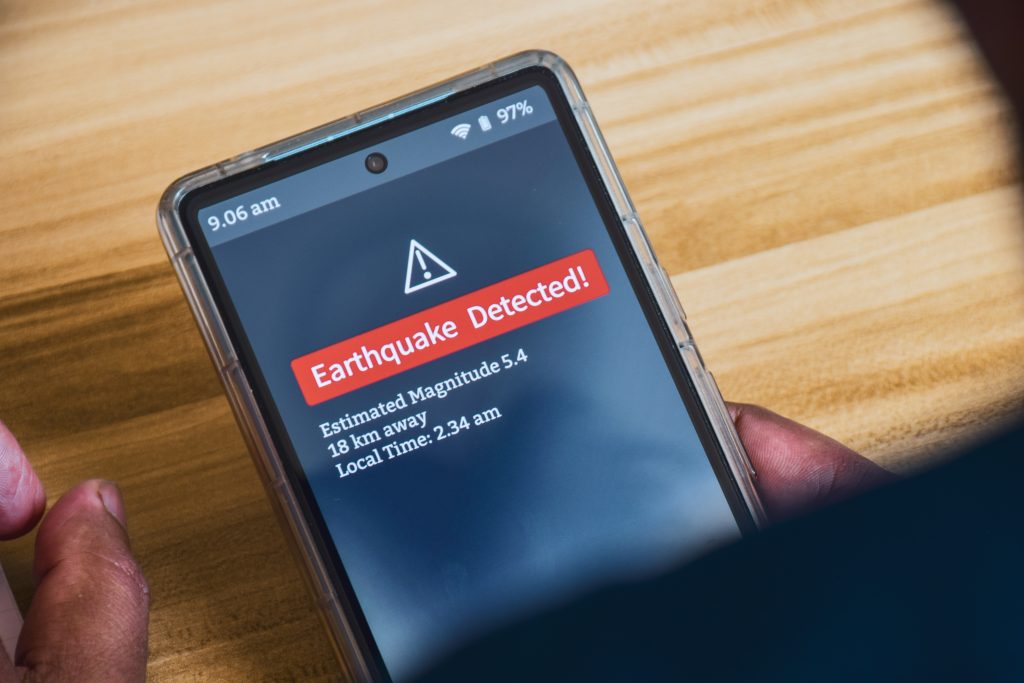
Earthquakes occur when stresses in the Earth’s crust are suddenly released, causing the ground to shake. Unlike weather events, earthquakes strike with little to no warning. The U.S. experiences thousands of earthquakes every year, but most are very small. According to the U.S. Geological Survey, about 50 earthquakes are detected each day on average in the United States – roughly 20,000 quakes a year. The majority are minor tremors that cause no damage (magnitude 2 or 3), and many aren’t even felt by people.
Earthquake Risk Zones
The highest earthquake hazard is on the West Coast due to the tectonic plate boundaries. California is notorious for quakes – Southern California alone has around 10,000 earthquakes each year, though only 15–20 are strong enough (above magnitude 4.0) to be noticeable. California’s largest faults (like the San Andreas Fault) are capable of major quakes (magnitude 7+) which could be devastating in populated areas.
Alaska actually sees even more quakes than California (including some huge ones), since it sits on an active subduction zone, but its quakes often strike remote areas. The Pacific Northwest (Washington, Oregon, British Columbia) also faces the threat of a very large earthquake from the Cascadia subduction zone, which could trigger tsunamis.
Outside the West, the central U.S. has the New Madrid Seismic Zone (around Missouri, Arkansas, Tennessee) which produced massive quakes in the early 1800s, and the Eastern U.S. has occasional moderate quakes (for example, a magnitude 5.8 quake struck Virginia in 2011 and was felt in many states). In fact, 46 of the 50 states have experienced earthquakes in recorded history (only a few like Florida and North Dakota have virtually none). Overall, about 143 million Americans live in counties with significant earthquake risk according to the USGS – that’s nearly half the population.
Earthquake Preparedness Essentials
While big earthquakes are infrequent, the lack of warning and potential for catastrophic damage make them a high-impact hazard to prepare for if you live in a prone area. If you’re on the West Coast or another quake zone, earthquake preparedness should be a priority. This means securing heavy furniture and water heaters (to prevent them from toppling), learning how to “Drop, Cover, and Hold On” during shaking, and having an emergency kit ready since infrastructure (water, power, roads) may be disrupted after a major quake.
Even outside high-risk areas, it’s good to know basic earthquake safety because quakes can happen unexpectedly. They may be rare, but if you’re in an earthquake-prone region like California, an earthquake could be the first emergency you face with no notice – so plan accordingly.
Winter Storms: Snow, Ice, and Freezing Cold
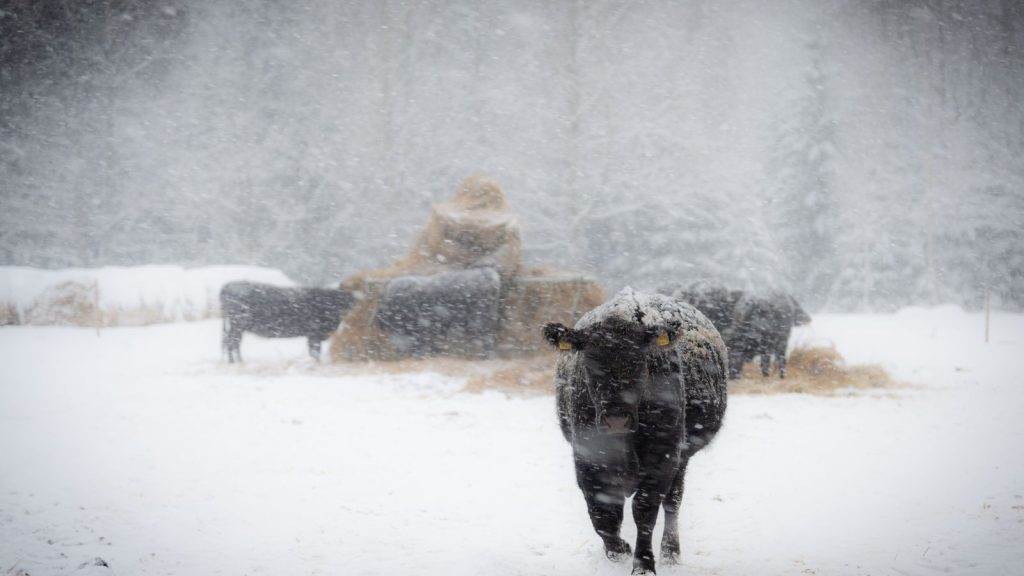
Severe winter storms – including blizzards (heavy snowstorms with strong winds) and ice storms – are common in large parts of the United States. Winter weather regularly affects the northern half of the country and higher elevations, but can also hit southern areas that aren’t used to snow (such as the 2021 Texas freeze). Each year, many Americans have to deal with hazards like deep snow, icy roads, extreme cold, and power outages due to winter storms.
Winter Storm Patterns
Historically, the U.S. has averaged around 10 to 15 significant blizzards per year. These storms most often impact the Northern Plains, Midwest, and Northeast. For example, the Great Plains and Upper Midwest (the Dakotas, Minnesota, Nebraska, etc.) see a high number of blizzards; one study documented over 10,000 blizzard events in that region from 1996 to 2020. The Northeast U.S. also frequently gets powerful Nor’easters that bring heavy snowfall and coastal flooding. Mountainous areas (like the Rockies and Sierra Nevada) can get crippling snowstorms as well.
Regional frequency varies: the Upper Midwest might experience multiple blizzards each winter, whereas the Deep South might only see snow/ice once a decade. But no region is completely immune – for instance, an unusual blizzard struck parts of the Southeast in December 2017, and an epic ice storm in 1998 crippled northern New England and parts of Canada.
Climate change may be shifting winter patterns; interestingly, some research suggests that while overall warmer winters mean fewer blizzards in the far future, for now the U.S. saw an uptick in heavy snow events in recent decades. Additionally, warmer air holds more moisture, so when cold air masses do arrive, they can produce big snowfalls (e.g., record lake-effect snows or Nor’easters).
Winter Storm Preparation
For those in cold-winter regions, preparing for winter storms is essential. Extreme snow or ice can shut down transportation, knock out electricity/heat, and pose life-threatening conditions (hypothermia, traffic accidents, etc.). Even if you live in a milder climate, you should have a plan for sudden cold snaps or ice – as Texans learned in 2021 when an unexpected deep freeze caused widespread outages.
Key steps include: winterizing your home (insulate pipes, have safe backup heat sources), assembling a car emergency kit if you drive in snow, and stocking up on food, water, and warm clothing in case you get snowed in. Winter storms are among the most frequent large-scale disasters in many states (some counties deal with blizzard conditions every winter), so this is a priority hazard to prepare for if you live in an affected region.
Droughts: A Slow-Moving Disaster
A drought is an extended period of unusually low rainfall, leading to water shortages. Unlike sudden disasters, droughts develop gradually, but they can have severe consequences for agriculture, water supply, and even wildfires (dry conditions set the stage for fires). Droughts are very common in the U.S., especially in the Western and Central states. Almost every year, some part of the country is experiencing drought.
Drought Patterns and Intensity
Nationwide data shows that large portions of the U.S. can be under drought at the same time. For instance, in late 2022, about 63% of the contiguous U.S. was in drought conditions. Earlier, the 2012 drought (one of the worst in recent history) saw about 55% of the country in drought at its peak. Certain states face chronic water shortages: California has had severe multi-year droughts, and in the 2020–2023 Southwestern drought, over 90% of Utah, Colorado, Nevada, and New Mexico were in drought simultaneously.
Droughts vary in severity and duration. Some are short and intense; others last for many years (megadroughts). The Southwest and Western U.S. have been trending toward drier conditions over the past few decades, partly due to warming temperatures and changing precipitation patterns. High heat can worsen drought by increasing evaporation of water from soil and reservoirs.
Climate scientists warn that climate change is likely to make droughts more frequent and severe in many regions that are already dry. Beyond the West, other parts of the country (like the Southern Plains and even parts of the Southeast) also see periodic droughts that dry up water wells and reservoirs. Drought is sometimes called a “silent” disaster because it doesn’t make headlines like a sudden storm, but it can impact millions of people through water restrictions, crop losses (raising food prices), and increased wildfire risk.
Preparing for Drought Conditions
Because drought’s effects are widespread and develop over time, preparedness is a bit different. If you live in a drought-prone area, water preparedness is key: practice water conservation (install efficient fixtures, collect rainwater where legal), and consider keeping an emergency store of water for household use. Communities should plan backup water sources if wells or usual supplies run low.
Farmers and gardeners can plan for drought by using drought-tolerant crops and irrigation methods. Even if you’re not in a desert, drought can hit your region unexpectedly (as in the upper Midwest in 2021). And the secondary effects, like wildfires and dust storms, can create emergencies. While you might not have a “drought go-bag,” being prepared means understanding your water supply and having plans if it becomes limited. As droughts are one of the most common environmental emergencies across the U.S., they deserve your attention – especially if you rely on well water or live in the West.
Extreme Heat: A Growing Danger
Extreme heat refers to periods of very high temperatures, often combined with high humidity, that pose risks to human health. Heat waves have become one of the deadliest natural hazards in the U.S. – even though heat doesn’t cause property damage like storms, it can be lethal to people. Extreme heat is actually the leading cause of weather-related deaths in the United States on average. A CDC study found that heat kills about 702 people per year in the U.S. (2004–2018 average), which is more than the annual deaths from hurricanes, tornadoes, or floods.
Heat Wave Patterns
Heat waves can affect anywhere, but they are especially dangerous in cities (which tend to trap heat) and in areas not used to very high temperatures. For example, the Pacific Northwest had a record heat wave in 2021 that reached 116°F in Oregon – a region where many homes lack air conditioning – leading to hundreds of deaths.
Every region has a different idea of “extreme” heat (90°F might be routine in Arizona but unheard of in Alaska), but overall, heat waves are becoming more frequent and intense due to global warming. Summers have been warming across the country – for instance, average summer temperatures have risen by about 2.5°F since 1970 in many U.S. cities. We are also seeing longer stretches of days with high heat index (which factors humidity). Notably, nights are warming too, which means less cooling off after hot days.
High humidity in parts of the country (like the Midwest and Southeast) can make heat waves very oppressive, raising the heat index to dangerous levels (for example, a 95°F day with high humidity can “feel like” 110°F). Climate projections indicate that extreme heat events will continue to worsen in coming years.
Heat Protection Priorities
Preparing for extreme heat is crucial because it’s a hazard that will likely affect everyone at some point, no matter where you live. Heat preparedness should be a priority, especially if you live in a city or a hot climate. Key steps include: ensuring you have access to air conditioning or cooling centers during heat waves, drinking plenty of water, and checking on vulnerable people (the elderly, those with medical conditions, and pets).
Never leave children or pets in cars, and avoid strenuous outdoor activities during the hottest part of the day. It’s wise to learn the signs of heat illness (like heat exhaustion or heat stroke) so you can act quickly. Unlike many disasters, extreme heat is an emergency that often comes with some notice (weather forecasts can predict heat waves), so use that time to get ready – stock up on water, and make plans to stay cool. Given that heat is the #1 weather-related killer in the U.S., it certainly deserves to be high on the list of emergencies to prepare for first.
How to Prioritize Your Preparedness
With so many kinds of disasters, you might wonder which emergency to prepare for first. The answer largely depends on where you live and what hazards are most common there. Here are some tips to prioritize:
- Know Your Regional Risks: Research which natural disasters happen most often in your state or community. If you’re in Florida, for example, hurricanes and floods are a top threat, so focus on those first. In Kansas, tornadoes and severe thunderstorms might be the priority. On the West Coast, earthquakes and wildfires top the list. Understanding the history and frequency of events in your area will tell you where to start. Local emergency management agencies often publish hazard assessments or maps showing the biggest risks.
- Prepare for High-Likelihood Events First: Some emergencies (like power outages or minor flooding) happen pretty much everywhere. Everyone should have basics like an emergency kit (with water, food, flashlight, etc.) that can serve you in many situations. After that, focus on the disasters that you are most likely to face. If you live near a river or in a low-lying area, flood preparation should be a priority (even if you’ve never flooded yet, remember 99% of counties have).
- Consider Severity as well as Frequency: You should also ask, “What’s the worst that could realistically happen here?” Even if an event is rare, if it would be catastrophic for you, it’s worth preparing for. For instance, a major earthquake on the New Madrid fault in the central U.S. is rare, but if you live in Memphis or St. Louis, it could be devastating – so some earthquake planning is smart. Likewise, a once-in-30-year hurricane can still strike your East Coast city, so don’t ignore it just because it’s infrequent. Balance likelihood with impact.
- Don’t Forget “Silent” Disasters: Some emergencies creep up on you – like heat waves and droughts. These might not have a siren or breaking news alert, but they cause harm. Make sure your preparedness plans include these less dramatic but deadly events (for example, having a plan for extreme heat days, or conserving water during droughts).
- Maintain Flexibility: Hazards can evolve. “Tornado Alley” is shifting, new wildfire zones are emerging, and climate change is affecting weather patterns. Stay informed about current trends (for example, if you notice more flooding or heat waves in recent years, adjust your preparedness focus accordingly). What you prepared for a decade ago might need updating.
Ultimately, an all-hazards approach is best – be ready for a variety of emergencies – but start with the most common threats in your own backyard. Once you have the fundamentals (emergency supplies, a family communication plan, insurance coverage for likely perils, etc.), you can build specific preparations for each scenario.
Disaster Preparedness Checklist
Use this practical checklist to bolster your readiness for the emergencies most relevant to your region. Check off items as you complete them to track your preparedness progress. You can grab a printable copy of this disaster preparedness checklist here (no signup required)
🌊 Flood Preparedness
- Determine your flood risk level (check FEMA flood maps)
- Purchase flood insurance if in a moderate to high-risk zone
- Identify evacuation routes to higher ground
- Prepare waterproof container for important documents
- Install check valves in plumbing to prevent backups
- Know how to shut off utilities (gas, water, electricity)
- Keep emergency supplies on upper floors if in flood zone
- Never drive through flooded roads (“Turn Around, Don’t Drown”)
🌀 Hurricane Preparedness
- Create a family evacuation plan and meeting point
- Prepare a 7-day emergency kit with food, water, medications
- Get a battery-powered NOAA weather radio
- Store flashlights and extra batteries
- Secure outdoor furniture and loose objects
- Obtain materials to board up windows (measured in advance)
- Trim trees and remove damaged branches near structures
- Keep car fueled and ready for evacuation
- Have cash on hand in case of power outages
- Fill bathtubs and containers with water before storm hits
🌪️ Tornado Preparedness
- Identify your safe room (basement or interior ground-floor room)
- Conduct family tornado drills regularly
- Set up weather alerts on your phone
- Keep protective head coverings in your safe room
- Store a whistle or air horn to signal for help if trapped
- Keep shoes by your bed during tornado season
- Learn to recognize tornado danger signs
- Store heavy blankets in safe room to protect from debris
- Know the difference between watches (possible) and warnings (imminent)
🔥 Wildfire Preparedness
- Create defensible space (30+ ft) around your home
- Remove dead vegetation within 100 feet of structures
- Clean gutters and roof of debris regularly
- Use fire-resistant building materials when possible
- Pack a “go-bag” with essentials ready to grab
- Develop an evacuation plan with multiple routes
- Sign up for emergency alerts in your area
- Keep garden hoses connected and ready
- Store important documents in fire-resistant safe or digitally
- Keep an N95 mask for each family member for smoke protection
🌋 Earthquake Preparedness
- Secure tall furniture to walls with straps or brackets
- Strap water heater to wall studs
- Move heavy items to lower shelves
- Practice “Drop, Cover, Hold On” drills with family
- Know how to shut off gas, water, and electricity
- Keep sturdy shoes and flashlight by every bed
- Install latches on cabinets to prevent contents from spilling
- Identify safe spots in each room (under table, away from windows)
- Keep emergency kit in accessible location
- Have a family communication plan for when separated
❄️ Winter Storm Preparedness
- Insulate water pipes and know how to prevent freezing
- Have alternative heating source and fuel
- Stock extra blankets, warm clothing, and sleeping bags
- Keep snow removal equipment accessible
- Prepare car emergency kit (blanket, food, water, sand/kitty litter)
- Store extra food that doesn’t require cooking
- Have battery-powered lighting options
- Insulate your home properly (weather stripping, plastic on windows)
- Know location of nearby warming centers
- Keep cell phones fully charged ahead of storms
💧 Drought Preparedness
- Install water-efficient fixtures in your home
- Fix all water leaks promptly
- Store emergency water (1 gallon per person per day for 2 weeks)
- Collect and use rainwater where legal
- Learn water conservation techniques for daily use
- Plant drought-tolerant landscaping (xeriscaping)
- Reduce lawn size in favor of less water-intensive options
- Install rain barrels under downspouts
- Use mulch around plants to retain moisture
- Know your community water restrictions during drought conditions
🌡️ Extreme Heat Preparedness
- Ensure air conditioning works properly or have alternative cooling
- Identify nearby cooling centers and their hours
- Install window reflectors to reflect heat back outside
- Stock up on rehydration drinks and water
- Acquire battery-powered fans for power outages
- Learn to recognize signs of heat exhaustion and heat stroke
- Create a buddy system to check on vulnerable neighbors
- Plan outdoor activities for coolest parts of the day
- Keep lightweight, light-colored clothing on hand
- Close blinds/curtains during day to keep heat out
Remember to review and update your preparations seasonally. While we can’t prevent natural disasters, we can be ready for them. Start with the hazards most common in your area, then expand your preparedness over time.
Use this disaster preparedness checklist as a quick-reference guide to bolster your readiness for the emergencies that are most relevant to you: By following the guidance above and tailoring it to the most likely disasters in your area, you’ll be taking important steps toward safety and self-reliance. Preparedness is an ongoing process, but even starting with the most common emergency you might face will significantly improve your resilience. Remember that while we can’t prevent natural disasters, we can prepare for them.
Being ready for the frequent events (like storms or heat) builds a foundation to handle larger crises too. Stay informed, make a plan, and periodically review your preparations. With this approach, you’ll know which emergencies to tackle first and will be well on your way to being prepared for whatever nature throws your way.
References
- Home | The National Flood Insurance Program
- Which states have been hit the hardest by flooding?
- 2025 Hurricane Season Outlook: Above-Average US Landfall Threat
- Hurricane Costs
- A Force of Nature: Hurricanes in a Changing Climate
- Severe Weather 101: Tornado FAQ
- Is tornado frequency increasing in parts of the U.S.?
- Are Wildfires Increasing or Decreasing in the U.S.?
- What We Do – Earthquake Hazards Program | U.S. Geological Survey
- Cool Earthquake Facts | U.S. Geological Survey
- Climatology of Blizzards in the Conterminous United States, 1959-2000
- Frequency of U.S. blizzards may decline in coming decades
- Monthly Climate Reports | Drought Report | October 2022
- Historical Data and Conditions | Drought.gov
- 2020–2023 North American drought – Wikipedia
- What’s the impact of extreme heat and heat waves on human health?
- Federal Government Mounts Response to Rising Heat Index | ASTHO
James is a former logistics coordinator and wilderness safety instructor, whose practical experience taught him the value of sensible preparedness and calm resilience. Passionate about self-reliance, James teaches everyday skills—like water purification, emergency communication, and outdoor safety—to help people confidently handle life's disruptions without fear or overwhelm. His approachable style combines real-world insights with relatable, personal stories and experiences.
